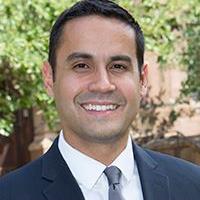Commentary on Luke 24:13-35
Luke’s narratives take us on the road frequently.1
A journey brings Mary and Joseph to Bethlehem. A road is the narrative setting for the parable of the Good Samaritan. A road leads the prodigal back home to his father. Jesus sets his eyes toward Jerusalem in Luke 9:51 and travels there until 19:28; this is known among scholars as the travel narrative wherein we find some of the most distinctively Lukan contributions to the story of Jesus.
The roads continue in the Book of Acts where, for instance, Paul encounters the risen Jesus on his way to Damascus. There is something about travel that evokes Luke’s literary and theological imagination. There is something about roads, the way roads bring us together, the way roads can pose a danger to us all, the way roads become a symbol of a faith on the move.
It is poignant then that the narrative of these two disciples on the road to Emmaus draws us to the conclusion of the Third Gospel. The story is a narrative wonder. Irony, misunderstanding, drama, a reveal: these are components of powerful story. Moreover, a number of Lukan themes are woven together in this narrative: table fellowship, hospitality, faithfulness, discipleship. The scene on this road augurs the future of Christ’s church in the Lukan imagery. This will be a church on the move, sent out by a Jesus who walks alongside us even when we don’t recognize him.
Let’s take a closer look at the narrative.
This scene is set on the same day as the women’s discovery of the empty tomb from last week. We learn that two disciples are walking, leaving Jerusalem to make the seven-mile jaunt to Emmaus. Why are they leaving Jerusalem? Do they fear for their lives now that Jesus has been executed? We don’t really know. All Luke tells us is that they are grieved about their recent experience. They are talking to one another, hoping to make sense of the nonsensical, when Jesus himself walks alongside them and joins them on their journey.
But in a sentence no English teacher would allow to stand, Luke recounts, “but their eyes were kept from recognizing him” (verse 16; italics added). Did you catch the passive voice? This grammatical construction occludes the reason that they can’t recognize Jesus. Were they so grieved by their experience and so sure that Jesus was gone that they simply didn’t expect him? Did Jesus look different after the resurrection? Was his face transformed? Was Jesus wearing a mask with a goofy mustache? We just don’t know. Luke does not tell us.
In a strikingly ironic moment, when Jesus asks these two disciples what they are discussing, they are incredulous. Who doesn’t know what has been happening in Jerusalem these days? It was all over the news; it was a trending topic on Twitter!
Their dashed hopes are voiced in verse 21: “… we had hoped that he was the one to redeem Israel…” Had hoped. We invested our hopes in this Jesus, but he was not whom we had hoped he would be. In response, Jesus outlines for them the meaning and significance of his own death, starting from Moses and the prophets. It was “necessary” that Jesus would suffer, die, rise, and be lifted up into “glory.”
The story takes one more twist. As they approach their destination, the two disciples notice that Jesus seems to be planning to keep walking. (Where was he headed? Again, Luke leaves us in the dark!) They exhort Jesus to stay with them. They offer hospitality to one whom they believe is a stranger. They offer to be hosts to this traveling companion and “new” friend.
But as soon as the table is set, Jesus upends the expected social roles. He becomes the host by blessing the bread and sharing it. Now, remember, they still don’t know that they are dining with Jesus once again; they don’t realize that their dashed hopes are restored in the resurrected body of this “stranger.”
But when Jesus does the most Jesus thing of all, everything changes.
I wonder what we think is the most characteristic activity of Jesus. When we imagine Jesus, what is he doing? For many, he is on the cross. For many, he may be preaching to a crowd. For many, he may be healing the sick with the touch of his hands. For many, he may be enthroned at the right hand of God.
For Luke, however, Jesus is most Jesus at a quotidian table, at an ordinary meal infused with significance because of the people gathered around the food. Jesus is there at this table but so also all the sinners and tax collectors with whom Jesus shared meals. But not only that! Also at this table are the many powerful people with whom Jesus also dined.
One of the most characteristic activities of Jesus’ ministry in Luke is eating. He is accused early in the Gospel of being a glutton and a drunkard (7:34); worse, he eats with all the wrong people! So, it’s instructive that it’s not his teaching that open their eyes. It’s not his presence. It’s his sharing of bread with his friends. It’s his blessing of food. In this sharing of bread at an ordinary table, we catch a glimpse of Jesus’ transformative kingdom.
In Luke, eating is a radical act because it breaks down cultural boundaries. In Luke, the resurrected Jesus shares that bread once again with his followers. And in feeding them, Jesus opens their eyes, helping them see that Jesus was with them the whole time.
Notes
- Commentary first published on this site on April 23, 2017.


April 26, 2020